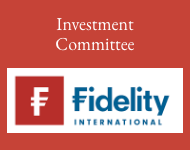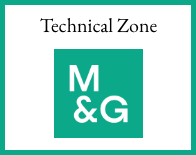A year after Donald Trump was re-elected as US President, uncertainty remains that could threaten to disrupt the current tariff equilibrium, says Lizzy Galbraith, senior political economist at Aberdeen.
A year after Donald Trump was re-elected as US President and following the announcement of a framework deal between the US and China, peak tariff uncertainty has passed but notable sources of residual uncertainty remain that could disrupt the current tariff equilibrium.
Firstly, the ongoing legal action connected to President Trump’s use of the International Emergency Economic Powers Act (IEEPA). Oral arguments will be heard by the Supreme Court from tomorrow, with a ruling likely in early-2026. Should the court rule against the Trump administration – currently a 64% probability according to Polymarket – US tariff policy is likely to become more volatile over 2026 as the President attempts to rebuild his tariff policy using alternative measures.
We think the President has enough options to restore the current 16% weighted tariff rate, but doing so would likely involve a combination of easily implemented measures using Section 122 or Section 338, and an expansion of sectoral tariffs which require months long investigations. As such, tariff uncertainty would rise in the aftermath of a ruling against IEEPA.
Second, US foreign policy may prove a source of tariff uncertainty. Trump has demonstrated his willingness to levy tariffs in response to non-trade issues, including disputes with Brazil over the prosecution of former President Bolsonaro and with India over its purchase of Russian oil.
Indeed, Trump’s continued efforts to agree a ceasefire between Russia and Ukraine could yet see secondary tariffs threatened and enacted against purchasers of Russian commodities including China and Turkey, in addition to India.
Third, there is a risk that trade deals and tariff arrangements already announced by Trump prove to be less durable than expected.
Over the course of this year the US and China have frequently made announcements that affect the trading relationship between the two countries, particularly relating to advanced technology and rare earths. Continued geopolitical competition between the two raises the possibility of tit-for-tat escalation despite last week’s framework deal.
USMCA negotiations are also likely to step up over 2026, with Mexico and Canada currently facing different tariff outlooks. US trade talks with Canada are currently suspended, while Mexico’s extended.
Other countries may also take measures that raise trade tensions with the US and risk current arrangements. For example, the French national assembly may double its digital services tax to 6%, a move strongly opposed by the US.
Lastly, more sectoral tariffs are likely to be announced, regardless of the IEEPA outcome. Investigations into semiconductors, critical minerals, commercial aircraft, wind turbines, medical equipment and polysilicon are ongoing. Tariffs enacted against steel, copper and aluminium have also seen their scope change over the course of implementation.
Main image: kamil-feczko-GhxWry42_zQ-unsplash
































